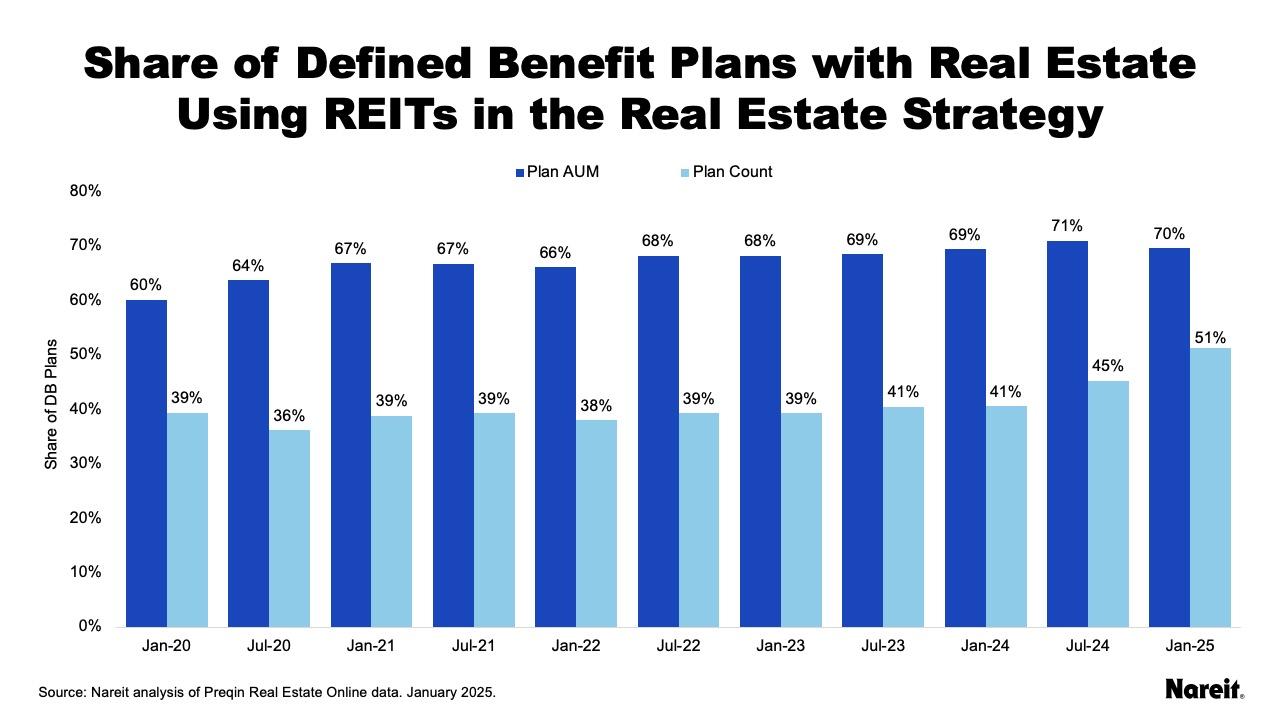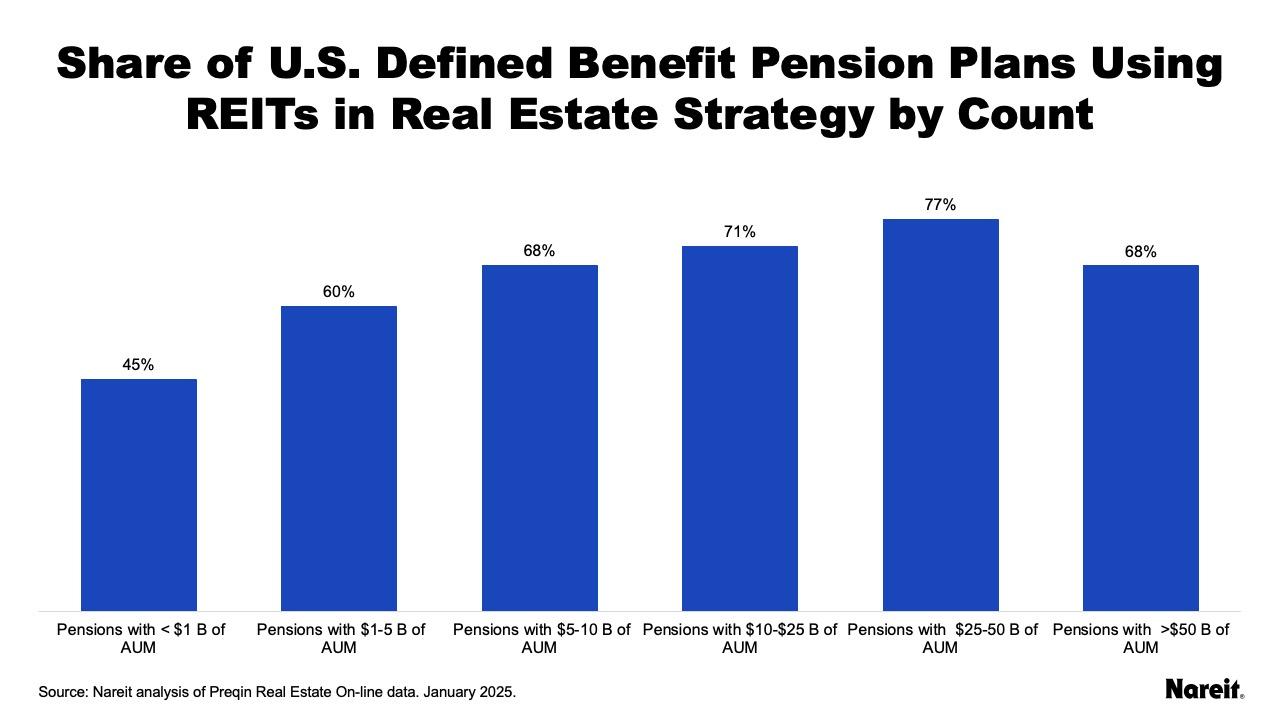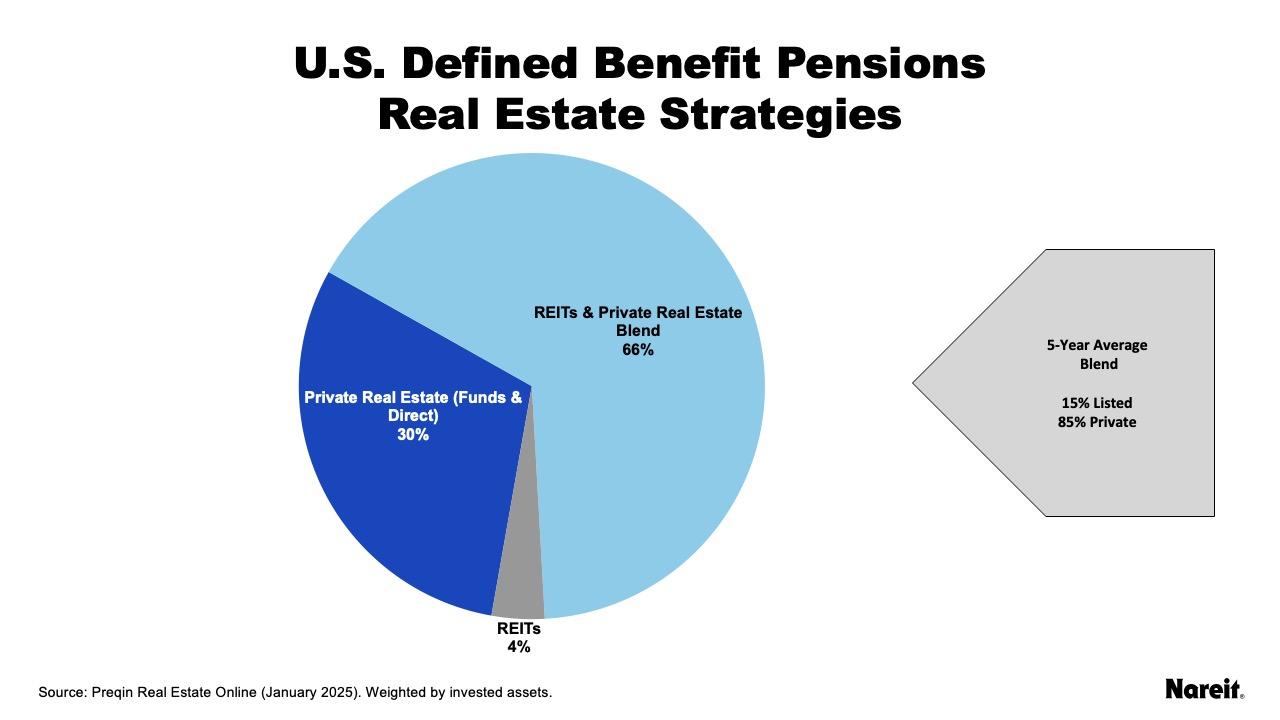Nareit analysis of data from Preqin, a financial research firm that tracks investments in alternative assets, indicates that the use of REITs by pension plans has increased in the last six years. As of January, nearly 2,000 defined benefit (DB) pension plans with more than $9.6 trillion of combined assets under management (AUM) had allocations to real estate. Of those, more than 1,000 DB pension plans with nearly $7 trillion of combined AUM were using REITs as part of their real estate strategy.

The chart above illustrates the growth of REIT market share by asset among DB pensions from January 2020 to January 2025. While DB total assets have increased approximately 12% in the last six years, DB total assets with REIT exposure increased by 30%.
This growth is best shown in the asset-weight share of DB pensions using REITs in their real estate strategy, which has increased from 60% in January 2020 to 70% in January 2025. The share of DB pensions with REIT allocations by count has also increased, going from 39% in January 2020 to 51% in January 2025. January’s increase to 51% from the July 2024 share of 45% is due to an increase in corporate DB plan coverage in Preqin and an increase in corporate DB plans reporting REIT usage.

REIT usage is more prevalent among larger, more sophisticated pension plans. For the plans in the data, 67% have less than $1 billion in AUM. The chart above depicts the share of pension plans by count using REITs in their real estate strategy, stratified by AUM.
While the overall share of all U.S. DB pension plans with a REIT allocation is 51%, the share of pension plans with more than $50 billion of AUM using REITs in their real estate strategy is 68%. The share is even higher in pension plans with $10 to $25 billion of AUM and DB pensions with AUM of $25 to $50 billion, at 71% and 77% respectively.
These results are directionally consistent with the 2024 Real Estate Allocations Monitor, a collaboration between Hodes Weill, an institutional real estate advisory firm, and Cornell University’s Baker Program in Real Estate. According to the study, 39% of U.S. institutional investors reported using REITs whereas more than 50% of U.S. institutions with more than $50 billion of AUM had REIT allocations.

Preqin defines three categories of real estate investment: direct investment in private real estate; indirect investment in private real estate; and investment in listed real estate. The chart above shows the share of pension plan assets in private real estate and listed as of January.
According to Preqin, 69% of all U.S. DB pension investment in real estate has exposure to REITs (figures do not sum due to rounding), with two-thirds investing in both REITs and private real estate and 4% using only REITs. For pension plans investing in both public and private real estate, the five-year average blended portfolio allocations were 15% in REITs and 85% in private real estate.
The increasing REIT allocation among U.S. pension plans over the past six years may be driven in part by the long-term REIT outperformance shown in the latest CEM report. The Nareit-sponsored report showed that over a 25-year period (1998-2022), REITs outperformed private real estate by more than 200 basis points. The study looked at realized performance of the assets chosen by plan managers and trustees over 25 years using a dataset covering more than 200 public and private sector pensions with in excess of $4 trillion in combined AUM. The CEM analysis found that REITs had an average annual net return over the 25-year period of 9.74%, second only to private equity. Private real estate, on the other hand, produced an average annual net return of 7.66% over the same period.
DB pension plans are increasingly using REITs in their real estate strategy to complement their private real estate investment. The long-term REIT outperformance may explain the increase in REIT usage, especially among the larger pension plans.